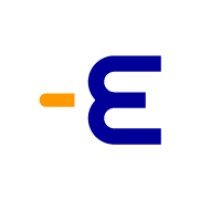ArcelorMittal plans big for its German steel plants using hydrogen
It will build two new EAF plants fed by DRI and switch blast furnaces to natural gas to reduce coal.

ArcelorMittal, the world largest steelmaker, is accelerating its steel decarbonisation plans in Germany by building a commercial-scale direct reduction of iron ore (DRI) and electric arc furnace (EAF) at its site in Bremen to produce green steel. The steel giant also plans to build a DRI pilot plant in addition to an electric arc furnace (EAF) in Eisenhüttenstadt, as the planned expansion of Germany’s hydrogen infrastructure. Both plants would be operating by 2026, producing 3.5 million tonnes/year steel in total.
The DRI plants are planned to be using hydrogen and can save over 5 million tonnes of CO2. In Bremen, natural gas will be used initially for the DRI, which would be switched to hydrogen produced through electrolysis. The hydrogen would be generated as part of the regional North German Clean Hydrogen Coastline network. Both sites will be connected to the European hydrogen network via the regional hydrogen networks.
The Bremen DRI plant will supply sponge iron to both Bremen and Eisenhüttenstadt until hydrogen can also be available to the Eisenhüttenstadt site. During the transition period, the Eisenhüttenstadt site will produce hydrogen from natural gas with the help of a pyrolysis plant which would be constructed on the site.
This year, ArcelorMittal also plans to convert two blast furnaces, each in Bremen and Eisenhuttenstadt, to natural gas injection. This would reduce the use of coal in the blast furnace resulting in less CO2 emissions.
The development plans would require up to € 1.5 billion in investment, and switching steelmaking to green hydrogen would result in production costs about 60% higher at current levels. The steelmaker is also seeking funding to make the development work possible.
Reiner Blaschek, CEO of ArcelorMittal Flachstahl Deutschland, said, “These projects have the potential to have a significant impact in reducing CO2 emissions, in line with the European Union’s climate commitments.”
In Germany, ArcelorMittal already operates Europe’s only DRI-EAF plant in Hamburg and planning to switch to hydrogen from natural gas. The plant will produce 100k tonnes/year of sponge iron before the technology reaches its maturity by 2025.
In a separate development, last week, ArcelorMittal Bremen, EWE, FAUN, Gasunie, swb and TenneT in northwest Germany announced a “Clean Hydrogen Coastline”. The aim is to integrate and scale hydrogen technology into the German and European energy systems with up to 1.3 billion investments. By 2026, the partners aim to integrate up to 400 MW of electrolysis capacity with corresponding hydrogen storage into the energy system. Mr Blascheck said, “We started the transformation process by preparing the technology change in order to use green hydrogen in production. To do this, we need a functioning supply of hydrogen at economic costs so that we can keep Bremen as a steel location competitive over the long term.”
